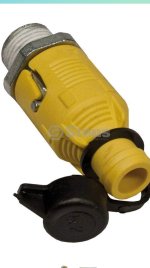I have a CC with a Kohler twin with the pull & twist drain valve. It seem as though oil is slo leaking out once the engine is running with heated oil and I’d obviously like to fix this. There are lots of YouTube videos associated with this but there’s something that I’m not understanding and I’m hoping someone knows and can enlighten me!
The EZ drain device is attached with a 13/16 silver nut and if I try to turn it with my hand (not a wrench) the nut will move loosely about 1/8 of an inch to the left or right.
How could that be???
The EZ drain device is attached with a 13/16 silver nut and if I try to turn it with my hand (not a wrench) the nut will move loosely about 1/8 of an inch to the left or right.
How could that be???

